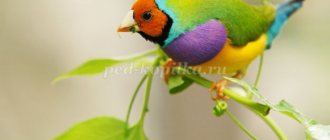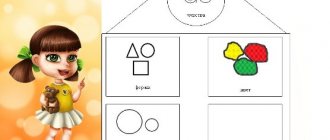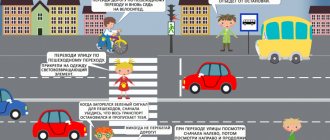Program "Childhood".
Respectful attitude towards the crafts of the native land, towards the artistic heritage of Russia. Showing interest in creative work. Expression of preferences.
Visiting of museum.
The idea of a museum as a treasury of values and works of art. Exhibits and collection. Interest in visiting museums, galleries; knowledge and desire to comply with the rules of conduct in the museum.
Development of productive activity and children's creativity
Objectives of educational activities:
Develop children's visual activity: independent determination of the concept of future work, the desire to create an expressive image, the ability to independently select impressions and experiences to determine the plot, select visual techniques and materials appropriate to the image, plan activities and achieve results, evaluate them, interact with other children in the process of collective creative works. Develop technical and visual-expressive skills.
To support the personal manifestations of older preschoolers in the process of mastering art and their own creative activity: independence, initiative, individuality, creativity.
Continue to develop emotional, aesthetic, creative, sensory and cognitive abilities.
Contents of educational activities
Development of skills to determine the intention of future work, independently select impressions and experiences to determine the plot, create an expressive image and convey one’s attitude.
Showing initiative in artistic and playful activities, expressing one’s own aesthetic judgments and assessments.
Development of skills to plan activities, bring work to results, and evaluate them; use materials economically. Introducing how to create a sketch. Ability to draw the outline of an object with a simple pencil. Mastering new, more complex ways of creating images.
Creating images from imagination, memory, from nature; the ability to analyze an object, properties, establish spatial, proportional relationships, and convey them in work.
Visual and expressive skills
Continued development of skills to highlight the main thing using adequate means of expression.
The use of color as a means of conveying mood, state, attitude towards the image or highlighting the main thing in the picture; properties of color (warm, cold range), beauty, brightness of saturated or muted tones. Ability to subtly distinguish shades (developed color perception). Ability to select paper backgrounds and color combinations. Development of skills to convey the variety of forms, textures, proportional relationships. In the depiction of the objective world: and convey similarities with real objects; when depicting from life, convey the characteristic and individual characteristics of objects and living objects; when depicting fairy-tale images, convey signs of unusualness; in a plot image, convey the relationships between objects, using all means of expressiveness and composition: depict objects in close, middle and distant plans, draw the horizon line; in a decorative image
create elegant, generalized images; decorate objects with ornaments and patterns, using rhythm and symmetry in compositional structure; decorate flat and three-dimensional shapes, object images and geometric bases.
Summary of educational and gaming activities in the senior group in the section of the “Childhood” program
Summary of educational and play activities for children of senior preschool age in the section of the “Childhood” program (Productive activities)
Topic: “Grocery Store”
Form of implementation: integration of gaming and productive activities Classification: joint activity of an adult and children, carried out during routine moments and aimed at solving educational problems. Integration of educational areas: • “Cognition” – development of children’s cognitive interests, intellectual development of children, formation of a holistic picture of the world, expansion of children’s horizons. • “Artistic creativity” – development of children’s productive activities; • “Socialization” – development of play activities, familiarization with the moral rules of relationships with adults and children. • “Communication” – development of free communication with adults and children. Form of organization of children: group. Preliminary work Examination of vegetables, fruits, bakery products, solving and memorizing riddles. Objectives: Teach children to sculpt vegetables, fruits, bakery products of various shapes (spherical, oval, cone-shaped, wicker0, convey their characteristic features. Reinforce the technique of smoothing, pinching, pinching. Demonstration material: natural vegetables: cucumber, tomato, potato, onion, carrots, beets; fruits: apple, banana, oranges, tangerine, pear; bakery products: bread, loaf, bun, braided material. Handouts: Plasticine, board, stack,
Course of direct educational activities
1. organizational moment - Good morning, let's greet each other with our palms.
Let's play the game “Heart” (takes out a heart). How beautiful it is, isn't it? And each of you has a heart. – Place your hand on your chest and listen to your heart beat. Feel its warmth with your palm, try to maintain this warmth. - Now, fold your palms in the shape of a heart, touch each other with your “heart” and give a piece of your warmth to the one who is next to you. Main part Method of clarifying the expectations and fears of preschoolers “What do I know about the store?” - Guys, where do we buy food? (in the store) - what is a “store”? (The premises where products are brought and then sold to people) - who works in the store? (sellers, cashiers, loaders, merchandise experts, manager) - what is the name of the place where goods are displayed? (Showcases, counters) - where in the store do they pay for their purchases? (at the cash register) What is the name of the department where they sell vegetables? (vegetable) - what is the name of the department where they sell fruit? (fruit) - where do they sell bread? (bakery) - guys, what should you say when approaching the seller (give, please; sell, please; thank you) - Guys? Do you want to play in the store? (yes) - Then let’s open a new super market together and come up with a name for it. (“Childhood Store”, “Creative Products” Store). - since you and I are not working yet and we do not have money, I think that we will be able to purchase food products for interesting riddles that we will ask the seller. 1. They buried them in the ground in May and didn’t take them out for a hundred days, but they started digging in the fall and found not just one, but ten! What's its name, kids? (Potatoes) 2. I grow in the garden. And when I ripen, they cook a tomato from me. They put it in cabbage soup and eat it like that. (tomatoes) 3. In the summer - in the garden, Fresh green ones. And in winter, in a barrel of strong pickles (Cucumbers) 4. For a curly tuft, I dragged a fox from a mink. It is very smooth to the touch, tastes like sugar, sweet (Carrot) 5. Above the ground there is grass, under the ground there is a scarlet head (beetroot) 6. Yellow citrus fruit It grows in sunny countries. But it tastes sour, and his name is.... (Lemon) 7. Round, ruddy, I grow on a branch; Adults and little children love me. (Apple) 8. He is sweet, but thick-skinned, and looks a little like a sickle. (Banana) 9. Bright, sweet, poured, All covered in gold. Not from a candy factory - From distant Africa. (Orange) 9. Boxers know everything about her. They develop their blow with her. Although she is clumsy, she looks like a fruit. (pear) 10. It’s easy and quick to guess: soft, fluffy and fragrant, It’s black, it’s white, and sometimes it’s burnt” (Bread) - Well done! Finger gymnastics Cat and mouse Look, the cat softly unclenches its claws. (clench the fingers of both hands into a fist and place them on the table, palms down; then slowly unclench your fists, spreading your fingers to the sides, showing how a cat releases its claws; when performing movements, the hands are lifted off the table, then the fist or palm is placed on the table again) And The Mouse squeezes them lightly, it scares her so much. The cat walks quietly, (the palms of both hands lie on the table; the elbows are spread in different directions; the cat (right hand) sneaks: all the fingers of the right hand slowly walk forward on the table. The mouse (left hand) runs away: the fingers of the other hand quickly move back ). You can't hear the floorboards creak, the mouse doesn't yawn, It runs away from the cat in an instant. -And now children, we will “bring” vegetables to the store, take “cold porcelain” and make your favorite vegetable (independent activity) - Well done! Now create the fruit you like best to open the fruit department in our store. - Well done. And the last section of our store, “bakery department”, please create the bakery product that you love most or that you eat every day. Now I suggest putting your products on display in the store and admiring their variety and abundance. and start the game “Shop” Result Guys. I think. that you will really enjoy playing the store you created with your own hands.
We recommend watching:
Summary of a lesson in the senior group with a compensatory focus for children with severe speech impairments Summary of the educational activity in the senior group “Journey to a Fairy Tale” Summary of a lesson in mathematics for children of the senior orthopedic group Summary of the senior group on the topic “Spring in the works of poets and composers”
Similar articles:
Lesson in the senior group of kindergarten on the topic of February 23
Lesson notes for children of senior preschool age. Topic: Invisible air
Summary of organized educational activities for children of the senior group
Notes for mathematics classes in the senior group
Lesson summary on the topic “Reserve” in the senior group
Review of environmental education programs for preschool children
Review of environmental education programs for preschool children
The initial link of the general concept of continuous environmental education is the sphere of preschool education. It is at the stage of preschool childhood that the child receives emotional impressions about nature, accumulates ideas about different forms of life, i.e. the fundamental principles of ecological thinking and consciousness are formed in him, and the initial elements of ecological culture are laid.
The content of the pedagogical process in preschool educational institutions is regulated by comprehensive and partial programs that provide one or more areas of development; Among the latter, environmental ones also stand out.
The comprehensive programs include “Rainbow”, “Childhood”, “Development”, “Origins”, “Kindergarten - a house of joy”, “Krokha”. The Ministry has also approved a number of partial environmental programs: “Seven Flowers”, “Nature and the Artist”, “Our Home is Nature”, “The World Around Us”, “Cobweb”, “Young Ecologist”.
All programs are focused on a new concept of raising preschool children, which is based on a personality-oriented model of education and an individual approach to the development of a child’s intellectual and artistic abilities. Let's consider the content of some programs with an environmental focus.
“Krokha” is a program for raising young children in families and kindergartens. Contains a section on environmental education. E.F. Terentyeva (author of the section) highlights a number of circumstances that adults can use to introduce children to nature. If there are plants, animals in the room (at home or in kindergarten), adults can involve children in observation and joint care. A diverse world opens up to children from the window of the room - an adult can show a child a lot. For the purpose of environmental education, observation of flora and fauna is organized at different times of the year, and games are played with children in nature and with natural materials.
The “Natural World” subsection of the “Rainbow” program is a component of the educational section of children, within which they are given information, develop cognitive processes, form an attitude towards the world around them - all together, according to T.I. Grizik creates in children an image of the world, a holistic idea of the environment. The methodological material of the program contains a large number of lessons devoted to plants, animals, planet Earth and the structure of the solar system. The subject of the classes involves the inclusion of geographical material and information about other countries (the nature of Africa, dinosaurs, etc.), based on seasonal observations, “portraits” of each month are compiled, children are introduced to the history of watches, calendars, and globes. The program includes educational facts about the world and nature, but they are not aimed at developing a value-based attitude towards it in children.
“Childhood” is a program for the multifaceted development of preschoolers with an environmental focus, created by the teaching staff of St. Petersburg Pedagogical University. It contains a section “A child discovers the world of nature,” which involves introducing children to various phenomena from the life of plants, animals, and their communities. The program includes four content blocks for each age: information about plants and animals as representatives of living things in the natural world (features of external structure and vital functions, the connection of living beings with their environment, their uniqueness); mechanisms of adaptive relationship between the life of organisms and their environment (properties of various environments, ideas about groups of animals living in a homogeneous environment); knowledge about the growth, development and reproduction of plants and animals familiar to children (ideas about successive changes in organisms, the cyclical nature of the process”; knowledge of an ecosystem nature (children get acquainted with plants and animals living in the same community, their interdependence).
N.I. Kondratieva developed a partial program for environmental education for children “We”. ABC of ecology". The content is based on an expanding understanding of a living organism. In all sections, knowledge acts as a leading factor in the development of environmental consciousness in children. According to the author, it is consciousness that allows an older preschooler to understand the role of man on Earth and to realize that he is a part of nature. The program involves traditional types of children's activities - observation, modeling, work in nature, play, creativity and design. Environmental protection activities, which can be carried out by older preschoolers in all seasons of the year, are of particular importance.
“Origins” is another comprehensive program created by the psychological and pedagogical team of researchers named after. A.V. Zaporozhets. The authors consider it as basic, aimed at the comprehensive, full development of the child, the formation of his unique (including creative) abilities and their development to the level of age-related capabilities and requirements of modern society. The program includes a section “Knowledge of the surrounding world.”
The main goal of the environmental program “Our Home is Nature” is to educate from the first years of life a humane, socially active, creative personality, capable of understanding and loving the world around us, nature and treating them with care. Particular attention is paid to the formation of a holistic view of nature and man’s place in it. Great importance is attached to the moral aspect: the development of ideas about the intrinsic value of nature, an emotional positive attitude towards it, the development of the first skills of environmentally literate and safe behavior in nature and everyday life. Children acquire initial skills that allow them to participate in feasible practical activities to protect the nature of their native land. The program contains a basic component, which is specified taking into account local conditions. It consists of a number of blocks, each of which includes a set of topics. In the first block, “Me and Nature,” children become familiar with the various components of the environment. Subsequent blocks provide additional information about each component (“Air”, “Water”, etc.). They then consider them in relation to each other. The final block “Man and Nature” is general in relation to the previous ones.
The “Young Ecologist” program (author S.N. Nikolaeva), aimed at introducing preschoolers to nature and environmental education, incorporated the results of research by scientists in the field of child psychology and pedagogy (A.V. Zaporozhets, L.A. Venger, V. S. Mukhina, N.N. Poddyakova, P.G. Samorukova, etc.). The beginning of work on environmental education of children in kindergarten is the correct organization of the natural zone, that part of the premises and area of the preschool institution where plants grow and any animals are kept.
Thus, at the present stage there is a wide variety of environmental education programs for preschoolers. Each of them offers different forms of organizing environmental education, but all are aimed at developing knowledge about the environment, instilling in children a humane attitude towards nature and awareness of themselves as a part of it.



